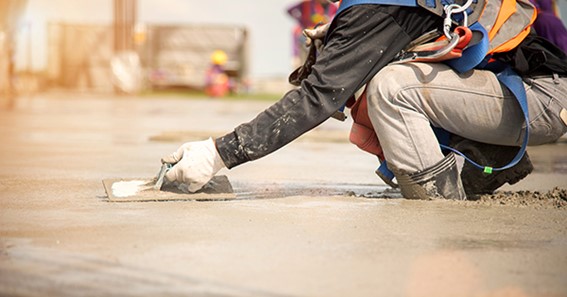Water seeping through your concrete floor is never good news. In addition to the general mess it can cause in a room, water seeping through the floor also creates a conducive environment for the growth of molds. This can be damaging to your house and also pose a health risk. Resolving this issue should be of paramount importance to any homeowner. By contacting the kind of professionals at Seepageseal, you can have such water issues promptly resolved. Every time water seeps through your concrete floor, your house’s foundation could weaken. By resolving such an issue quickly, you help to preserve your house foundation’s structural integrity.
Causes of Water Seeping Through a Concrete Floor
Understanding what causes water to seep through a concrete floor is crucial to dealing with it. Several phenomena contribute to this issue. These include:
i)Permeability of concrete: Unlike materials like cement and metal, concrete is permeable to water even after setting( the process of getting wet concrete to dry). As wet concrete dries, the process of evaporation enables tiny pockets of air to be trapped within the concrete’s structure. The air pockets will provide the channels through which water will travel through the concrete and penetrate its floor side surface.
- ii) Imbalance of relative humidity: The principle of relative humidity dictates that water vapor moves from an area where it’s highly concentrated to where there’s little of it. This same principle enables water to penetrate through a concrete floor. If a mass of concrete has higher relative humidity compared to the air surrounding it, the droplets of water vapor in it will move toward the air. This will manifest as water through the concrete’s floor surface.
iii) Hydrostatic pressure: Water contains inherent pressure that it exerts on all objects in its surrounding. Hydrostatic pressure will enable water to gradually seep through the ground into the foundation of a house. This will later penetrate the concrete floor. Several factors greatly contribute to this scenario. For instance, this scenario is relatively common if the house is built on a hillside or if its foundation is dug too deeply.
Click here – How to Keep Your Home Cool with Replacement Windows?
Stopping Water Seepage Through a Concrete Floor
1)Installing a French Drain
A French drain is very useful in helping to relieve water pressure on a house’s foundation. By channeling water away from the foundation, a French drain ensures that hydrostatic pressure does not gradually build to dangerous levels to seep through a concrete floor.
A French drain needs a trench into which it is set. It is simply a pipe that is laid underground and is covered with pebbles or gravel. The pipe has multiple perforations through which water can flow. The trench into which the French drain is laid needs to start in an area where the hydrostatic pressure is greatest. Depending on the water table of an area, the French drain may need to be laid deeper or shallow. When placed at the right level relative to the water table, a french drain is very effective at relieving the hydrostatic pressure exerted on a house’s foundation. This helps to prevent water from seeping through a concrete floor.
To discover more about polished concrete in Melbourne please visit Policrete.
2) Fill Up The Cracks
If your concrete floor has cracks that are letting water through, sealing them up is a quick and effective solution. However, you need to be careful when doing this. Sealing such cracks needs to be done thoroughly. For example, simply using wet cement to fill such cracks is not the best solution. This is because wet cement may not cover all the spaces that are deep within the cracks, something you won’t be able to see. Always use a concrete repair kit. Such a kit will have a silicate-based sealant product which is much more effective at sealing cracks than things like wet cement.
Spread a good amount of this silicate-based sealant to ensure the crack is filled. This sealant will react with the lime in the concrete, expanding and hardening to fill up all the cracks underneath.
3) Seal Up Supporting Joints
The areas with supporting joints in a room can also act as entry points for water. For example, any joints between the concrete floor and a wall are susceptible to water seepage. Any areas where fixtures like pipes and heaters penetrate the floor can also be sources of water seepage. Use exterior-grade caulk to seal up all such areas. You won’t have to worry about your concrete being able to expand or not. Caulk is very pliable in this regard.
These are the best ways of stopping water from seeping through your concrete floor.
For many homeowners, applying thick paint over the cracks on their concrete floor can seem like an attractive option. However, it is only a temporary solution. With time, the paint will start to crack, meaning water will seep through the cracks again. A silicate-based sealant is the best choice.
All in all, vigilance is key. It’ll help you spot the first signs of cracks in your floor to enable you to take prompt action.
Click here – Why Hiring a Criminal Defense Attorney is a Wise Decision






